Wines of Chile hosted an online tasting of red blends the other night. I jumped at the opportunity to participate for several reasons. First of all, schedule permitting; I rarely turn down the opportunity to try some new wines. Secondly I’ve been a long term fan of the quality, diversity and value at varying price points that’s coming out of Chile. And last, but certainly not least, it’s fun. The format for this tasting was very similar to one I took part in a few months back, and it’s a system that works. Master Sommelier Fred Dexheimer hosted the proceedings from New York City, The winemakers for each of the eight wines we tasted were gathered in a room in Santiago Chile and the rest of us looked on via the web and submitted questions through a chat function as well as commented back and forth. Additionally most folks Tweeted during the proceedings. Tasting the wines and making notes that night was great. Many of the offerings certainly seemed like they had the structure for at least medium term aging. With that in mind I went back to the wines after 24 hours to see how they evolved. Here are my thoughts on these eight wines, presented in the order we tasted them.
 Valdivieso 2005 Eclat – Fruit for this wine was sourced in the Melozal area of Maule Valley. This offering is a blend of Carignan (56%), Mourvedre (24%), and Syrah (20%). The Carignan vines have over 60 years of age on them. This wine was aged for 12 months in French oak. It has a suggested retail price of $27. This wine, the oldest of the bunch, has a deep garnet hue. Aromas of spice and cocoa are both prominent on the nose. Zingy raspberry flavors are underscored by rhubarb throughout the palate. Minerals and earth notes are both in abundance in the above average finish. This wine is a food lovers dream. The firm acidity makes it a natural partner for a very wide array of matches. I liked this wine so much I wanted to climb inside the bottle and get closer to it. I’d settle for a long weekend with a couple of cases and some delicious food to munch on. Bottom line, this is just an excellent wine that you’re going to want to keep reaching for more of. When I went back to this wine after 24 hours it had held steady and was drinking as well as it had the evening before.
Valdivieso 2005 Eclat – Fruit for this wine was sourced in the Melozal area of Maule Valley. This offering is a blend of Carignan (56%), Mourvedre (24%), and Syrah (20%). The Carignan vines have over 60 years of age on them. This wine was aged for 12 months in French oak. It has a suggested retail price of $27. This wine, the oldest of the bunch, has a deep garnet hue. Aromas of spice and cocoa are both prominent on the nose. Zingy raspberry flavors are underscored by rhubarb throughout the palate. Minerals and earth notes are both in abundance in the above average finish. This wine is a food lovers dream. The firm acidity makes it a natural partner for a very wide array of matches. I liked this wine so much I wanted to climb inside the bottle and get closer to it. I’d settle for a long weekend with a couple of cases and some delicious food to munch on. Bottom line, this is just an excellent wine that you’re going to want to keep reaching for more of. When I went back to this wine after 24 hours it had held steady and was drinking as well as it had the evening before.
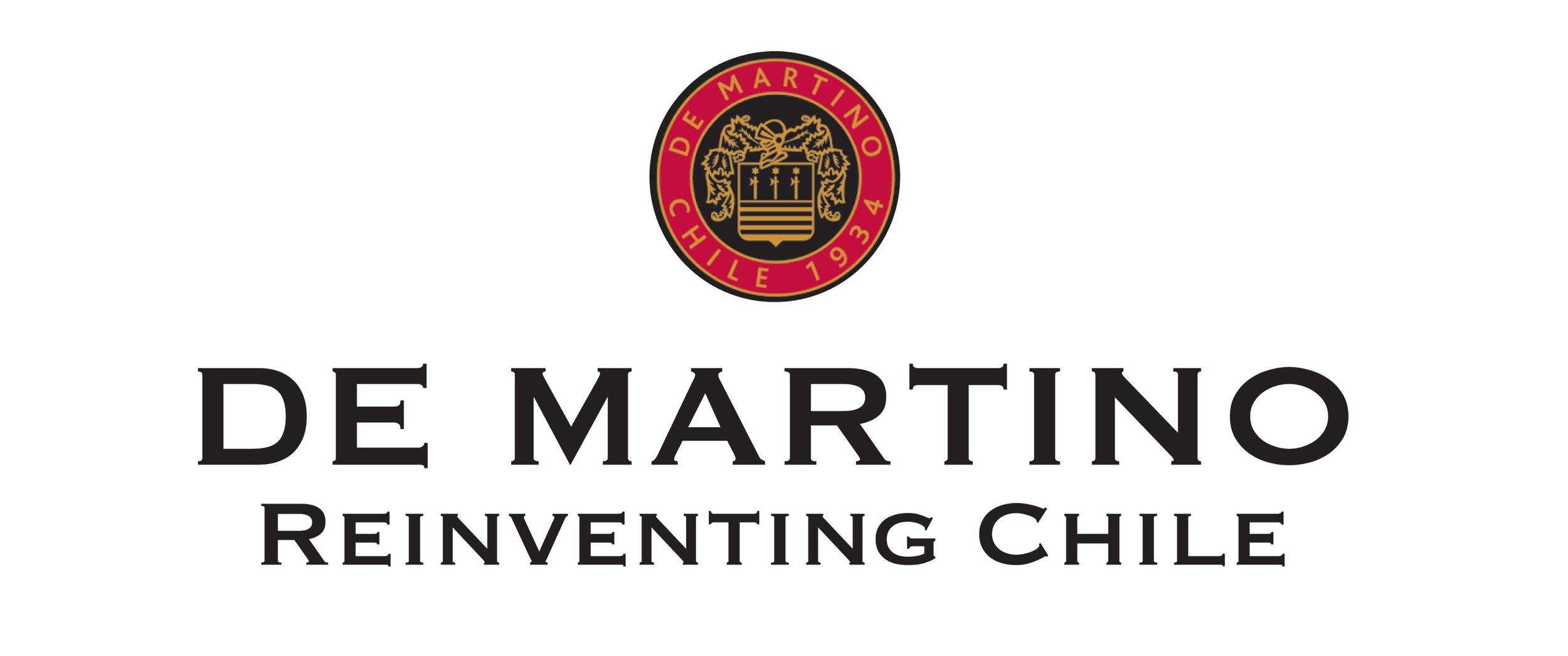 De Martino 2006 “Las Cruces” Single Vineyard Old Bush Vines – Fruit for this wine is from a single vineyard in Cachapoal Valley. This offering is a blend of Malbec (66%) and Carmenère (34%); there are also very low amounts of some other varieties. This wine was aged in French oak for 14 months. It has a suggested retail price of $45. A hint of mint emerges in the nose of this wine. The palate is layered and remarkably restrained for a blend of predominately Malbec and Carmenère. That said when re-tasting it after 24 hours it was significantly more expressive. The red fruits, tinged by hints of darker black fruits were more apparent on day two. The finish which has very good length shows off some sour red fruit elements and continued spice. This wine is remarkably smooth, refined and elegant. In short it’s Grace in a bottle. Delicious now, particularly with food, it should age well for 8 or more years. Pair this with hearty foods for memorable results.
De Martino 2006 “Las Cruces” Single Vineyard Old Bush Vines – Fruit for this wine is from a single vineyard in Cachapoal Valley. This offering is a blend of Malbec (66%) and Carmenère (34%); there are also very low amounts of some other varieties. This wine was aged in French oak for 14 months. It has a suggested retail price of $45. A hint of mint emerges in the nose of this wine. The palate is layered and remarkably restrained for a blend of predominately Malbec and Carmenère. That said when re-tasting it after 24 hours it was significantly more expressive. The red fruits, tinged by hints of darker black fruits were more apparent on day two. The finish which has very good length shows off some sour red fruit elements and continued spice. This wine is remarkably smooth, refined and elegant. In short it’s Grace in a bottle. Delicious now, particularly with food, it should age well for 8 or more years. Pair this with hearty foods for memorable results.
 Estampa 2008 Gold Assemblage Carmenère – The fruit for this offering was sourced primarily at their Marchigue estate near the Pacific Ocean. This wine is a blend of Carmenère (57%), Cabernet Sauvignon (23%), Cabernet Franc (12%) and Petit Verdot (8%). This selection has a suggested retail price of $22. The first impression of this wine is the fresh fruit aromas that waft from the nose with conviction. They’re underscored by spice and a touch of herb. Throughout the palate loads of berry fruit flavors emerge and play key roles in what is a very expressive, multi-layered wine. Both earth and espresso notes come out to play in force on the lengthy and persistent finish. Re-tasting this the second day showcased how this wine can really open up with some air and its flavors become even more animated than before. This blend from Estampa has the structure and stuffing to age gracefully for a dozen years at minimum; in short it’s a baby today. More impressive, at $22 this wine is an outright steal. This would be an excellent choice to put away a case of to watch evolve over time. This is a real knockout. If you drink it now decant it for 3 hours to get the most out of it.
Estampa 2008 Gold Assemblage Carmenère – The fruit for this offering was sourced primarily at their Marchigue estate near the Pacific Ocean. This wine is a blend of Carmenère (57%), Cabernet Sauvignon (23%), Cabernet Franc (12%) and Petit Verdot (8%). This selection has a suggested retail price of $22. The first impression of this wine is the fresh fruit aromas that waft from the nose with conviction. They’re underscored by spice and a touch of herb. Throughout the palate loads of berry fruit flavors emerge and play key roles in what is a very expressive, multi-layered wine. Both earth and espresso notes come out to play in force on the lengthy and persistent finish. Re-tasting this the second day showcased how this wine can really open up with some air and its flavors become even more animated than before. This blend from Estampa has the structure and stuffing to age gracefully for a dozen years at minimum; in short it’s a baby today. More impressive, at $22 this wine is an outright steal. This would be an excellent choice to put away a case of to watch evolve over time. This is a real knockout. If you drink it now decant it for 3 hours to get the most out of it.
 Montes 2008 Limited Selection Cabernet Sauvignon Carmenère – Fruit for this blend was sourced at the Montes La Finca Estate in Apalta Valley. This offering is a blend of Cabernet Sauvignon (70%), and Carmenère (30%). This wine spent six months in American oak. It has a suggested retail price of $15. The dark hue of this wine struck me as it was decidedly more intense in color than the previous three. The nose is filled with heady black cherry and copious quantities of intoxicating plum pudding spice. Those characteristics continue through the palate where red and black cherry flavors play a significant role. The palate is quite layered and while everything is in proportion the flavors are intense, just short of explosive. Minerals such as graphite in addition to other elements like earth and continued black fruits dominate the solid finish. This wine surprised me; I didn’t expect it to be better the next day. In fact I thought this was a candidate to taste a little sluggish on day 2, boy was I wrong. The openness of the flavors really ratcheted up several notches after 24 hours. For $15 this wine offers tons of drinking pleasure. Enjoy it over the next 3-4 years to get the most of its exuberant youth.
Montes 2008 Limited Selection Cabernet Sauvignon Carmenère – Fruit for this blend was sourced at the Montes La Finca Estate in Apalta Valley. This offering is a blend of Cabernet Sauvignon (70%), and Carmenère (30%). This wine spent six months in American oak. It has a suggested retail price of $15. The dark hue of this wine struck me as it was decidedly more intense in color than the previous three. The nose is filled with heady black cherry and copious quantities of intoxicating plum pudding spice. Those characteristics continue through the palate where red and black cherry flavors play a significant role. The palate is quite layered and while everything is in proportion the flavors are intense, just short of explosive. Minerals such as graphite in addition to other elements like earth and continued black fruits dominate the solid finish. This wine surprised me; I didn’t expect it to be better the next day. In fact I thought this was a candidate to taste a little sluggish on day 2, boy was I wrong. The openness of the flavors really ratcheted up several notches after 24 hours. For $15 this wine offers tons of drinking pleasure. Enjoy it over the next 3-4 years to get the most of its exuberant youth.
 Maquis 2006 Lien – The fruit for this wine was sourced at the Maquis vineyards which are between two rivers. This vintage is a blend of Syrah (42%), Carmenère (30%), Cabernet Franc (12%), Petit Verdot (9%), and Malbec (7%). This wine was aged in all French oak. It has a suggested retail price of $19. Black fruits and spice are the dominant characteristics of the nose. The palate is loaded with juicy, red and black fruit flavors. Chocolate notes emerge as well along with spice elements. While the fruit is fresh and intense it never comes close to nudging over the top. In fact all of the elements come together lending themselves towards a wine that has both new and old world flourishes. I find that Lien has lots of wow factor. It’s going to have smart crowd appeal. It has the openness to appeal to the masses and the structure and complexity to keep more seasoned wine lovers happy. For $19 this wine is a very solid value. On the second day I found that it held its own quite nicely. Not built for long term aging, but it’ll drink well for five years. Having had this wine several times over the last few vintages, I can say that the quality and value have remained consistent.
Maquis 2006 Lien – The fruit for this wine was sourced at the Maquis vineyards which are between two rivers. This vintage is a blend of Syrah (42%), Carmenère (30%), Cabernet Franc (12%), Petit Verdot (9%), and Malbec (7%). This wine was aged in all French oak. It has a suggested retail price of $19. Black fruits and spice are the dominant characteristics of the nose. The palate is loaded with juicy, red and black fruit flavors. Chocolate notes emerge as well along with spice elements. While the fruit is fresh and intense it never comes close to nudging over the top. In fact all of the elements come together lending themselves towards a wine that has both new and old world flourishes. I find that Lien has lots of wow factor. It’s going to have smart crowd appeal. It has the openness to appeal to the masses and the structure and complexity to keep more seasoned wine lovers happy. For $19 this wine is a very solid value. On the second day I found that it held its own quite nicely. Not built for long term aging, but it’ll drink well for five years. Having had this wine several times over the last few vintages, I can say that the quality and value have remained consistent.
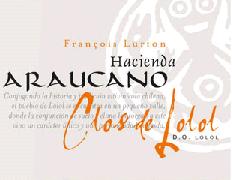 Hacienda Araucano 2008 Clos de Lolol – Fruit for this effort was sourced in the Lolol Valley. This offering is a blend of Syrah (31%), Cabernet Franc (29%), Cabernet Sauvignon (23%), and Carmenère (17%). The Cabernet Sauvignon and Carmenère vines are some of the last vines in the world not to have known Phylloxera. This wine has a suggested retail price of $23. Aromas of fleshy plum and chocolate sauce are both part of the nose. Cherry comes out in droves on the palate as well as loads of spice, black pepper in particular. Kirsch liqueur emerges on the finish along with flourishes of sour berry. This wine is layered and polished. It has firm but yielding tannins and solid acidity. It drinks well on its own but will be a terrific partner to full flavored foods. On the second day this wine had opened up just a touch more. Mostly it had held steady and showed again a day later that buying this wine for $23 is petty larceny. It stands as one of the two or three best values of these 8 in a tasting loaded with wines that over deliver.
Hacienda Araucano 2008 Clos de Lolol – Fruit for this effort was sourced in the Lolol Valley. This offering is a blend of Syrah (31%), Cabernet Franc (29%), Cabernet Sauvignon (23%), and Carmenère (17%). The Cabernet Sauvignon and Carmenère vines are some of the last vines in the world not to have known Phylloxera. This wine has a suggested retail price of $23. Aromas of fleshy plum and chocolate sauce are both part of the nose. Cherry comes out in droves on the palate as well as loads of spice, black pepper in particular. Kirsch liqueur emerges on the finish along with flourishes of sour berry. This wine is layered and polished. It has firm but yielding tannins and solid acidity. It drinks well on its own but will be a terrific partner to full flavored foods. On the second day this wine had opened up just a touch more. Mostly it had held steady and showed again a day later that buying this wine for $23 is petty larceny. It stands as one of the two or three best values of these 8 in a tasting loaded with wines that over deliver.
 Emiliana 2007 Coyam – Fruit for this wine was sourced in Colchagua Valley. This offering is a blend of Syrah (38%), Cabernet Sauvignon (21%), Carmenère (21%), Merlot 17%), Petit Verdot (2%) and Mourvedre (1%). It was aged for 13 months in a combination of French (80%) and American (20%) oak. This wine has a suggested retail price of $29. A touch of eucalyptus emerges from the nose of this 2007 blend. It’s joined by prominent chocolate covered cherry aromas. Cherry and blackberry flavors along with toasty oak notes are all out with varying degrees of intensity through the palate. An absolute avalanche of dusty dark chocolate emerges on the finish along with earth and chicory notes. Firm tannins yield with some air. This wine is well structured for the long haul. Of the 8 wine in this Chilean Blends tasting Coyam was the most dramatically different the 2nd day. It was quite delicious on day one, but in retrospect akin to a shy child who needs some time to open up and get comfortable. On the second day the flavors just exploded on the palate and lingered on the back of the throat in a persistent finish that left an impression long after the last sip. Coyam is a very impressive wine that I’d love to re-taste 5-10 years down the road to see its evolution.
Emiliana 2007 Coyam – Fruit for this wine was sourced in Colchagua Valley. This offering is a blend of Syrah (38%), Cabernet Sauvignon (21%), Carmenère (21%), Merlot 17%), Petit Verdot (2%) and Mourvedre (1%). It was aged for 13 months in a combination of French (80%) and American (20%) oak. This wine has a suggested retail price of $29. A touch of eucalyptus emerges from the nose of this 2007 blend. It’s joined by prominent chocolate covered cherry aromas. Cherry and blackberry flavors along with toasty oak notes are all out with varying degrees of intensity through the palate. An absolute avalanche of dusty dark chocolate emerges on the finish along with earth and chicory notes. Firm tannins yield with some air. This wine is well structured for the long haul. Of the 8 wine in this Chilean Blends tasting Coyam was the most dramatically different the 2nd day. It was quite delicious on day one, but in retrospect akin to a shy child who needs some time to open up and get comfortable. On the second day the flavors just exploded on the palate and lingered on the back of the throat in a persistent finish that left an impression long after the last sip. Coyam is a very impressive wine that I’d love to re-taste 5-10 years down the road to see its evolution.
 Casas del Bosque 2007 Gran Estate Selection Private Reserve – Fruit for this release was sourced in Casablanca Valley. This offering is a blend of Syrah (61%), Merlot (26%), and Pinot Noir (13%). This wine spent 22 months in 100% new French oak. It has a suggested retail price of $50. This wine has the deepest, darkest hue of the bunch. Aromas of dark fruit such as blueberry and huckleberry fill the nose. The Pinot Noir in this blend really makes its presence known in the palate; there’s a lighter bodied feel it adds, which belies the weight and heft this overall wine really has. Licorice and baker’s spice flavors join the compote of dark fruit flavors that make up this wines intense, brooding middle. Chewy tannins, and lots of juicy, sumptuous fruit flavors are part of a lengthy finish that has layer after layer of flavor. This wine was a little closed out of the chute and really needed air to open up. On day 2 it had opened up significantly; but quite frankly it tasted like it still had plenty to give. It’s an impressive wine that should definitely be decanted if you drink it over the next few years. I expect this wine to improve in the bottle over the next decade or so and to drink well for several years after that.
Casas del Bosque 2007 Gran Estate Selection Private Reserve – Fruit for this release was sourced in Casablanca Valley. This offering is a blend of Syrah (61%), Merlot (26%), and Pinot Noir (13%). This wine spent 22 months in 100% new French oak. It has a suggested retail price of $50. This wine has the deepest, darkest hue of the bunch. Aromas of dark fruit such as blueberry and huckleberry fill the nose. The Pinot Noir in this blend really makes its presence known in the palate; there’s a lighter bodied feel it adds, which belies the weight and heft this overall wine really has. Licorice and baker’s spice flavors join the compote of dark fruit flavors that make up this wines intense, brooding middle. Chewy tannins, and lots of juicy, sumptuous fruit flavors are part of a lengthy finish that has layer after layer of flavor. This wine was a little closed out of the chute and really needed air to open up. On day 2 it had opened up significantly; but quite frankly it tasted like it still had plenty to give. It’s an impressive wine that should definitely be decanted if you drink it over the next few years. I expect this wine to improve in the bottle over the next decade or so and to drink well for several years after that.
Several factors should become obvious to anyone tasting these wines side by side. There are a host of delicious blended wines being produced in Chile from a diverse and ever expanding array of grapes. Some of these grapes are associated with Chile in people’s minds, but many are not, and provide a real sense of discovery. The quality across the board, regardless of price point can be quite staggering. This is particularly obvious when you take into account what the same money buys you in wine from numerous other regions. And while I’m mentioning value let me make it clear I don’t mean Entry level $6 bottles. Value is important regardless of what you spend on a wine. I’m a firm believer that a $100 bottle of wine can be every bit as significant of a value as a $10 bottle. To me, it’s always relative to what else you can buy for that $100, or that $20 for that matter. This tasting of Chilean blends was a microcosm of that idea. The suggested retail prices of these 8 wines ranged from $15 to $50 which is a decent sized gulf for many folks. Perhaps most impressive, that while it certainly varied, each of the 8 wines delivers quality well over normal expectation for the price-point. If you haven't considered Chilean Wines recently, now is a good time to jump in. There are many delicious offerings to try, regardless of your budget.
 There’s a lot of delicious and fascinating wine coming out of Chile. The varieties available run the gamut. Not the least of them is Carmenere. More and more examples of this varietal are appearing on our shelves and they’re starting to gain some traction with wine lovers. Like a lot of what’s coming out of South America as a whole, and Chile in particular, Carmenere can often represent terrific values. Today I’ll look at one from the Rapel Valley.
The Misiones D Rengo 2008 Carmenere was made using fruit sourced from vines with 17 years of age on them. In addition to Carmenere (95%), this wine has some Syrah (5%), blended in. After the grapes were hand harvested, fermentation took place in stainless steel tanks at controlled temperatures. 80% of the wine was barrel aged in a combination of French and American oak; 6 months of bottle aging followed. This offering has a suggested retail price of $18.
There’s a lot of delicious and fascinating wine coming out of Chile. The varieties available run the gamut. Not the least of them is Carmenere. More and more examples of this varietal are appearing on our shelves and they’re starting to gain some traction with wine lovers. Like a lot of what’s coming out of South America as a whole, and Chile in particular, Carmenere can often represent terrific values. Today I’ll look at one from the Rapel Valley.
The Misiones D Rengo 2008 Carmenere was made using fruit sourced from vines with 17 years of age on them. In addition to Carmenere (95%), this wine has some Syrah (5%), blended in. After the grapes were hand harvested, fermentation took place in stainless steel tanks at controlled temperatures. 80% of the wine was barrel aged in a combination of French and American oak; 6 months of bottle aging followed. This offering has a suggested retail price of $18.
 Pinot Noir is amongst the varieties that I’m pickiest about in terms of style. To start with I’m a pretty firm believer that nothing else really belongs blended in with Pinot Noir. Of course it should also be planted in an appropriate spot and be treated right every step of the way. There’s a purity and a beauty that can be achieved with this grape when it’s appropriately handled that is distinct and impressive. Of late I’ve run across more and more examples from South America that hit my sweet spot for well made Pinot that stays true to varietal character. Today I’ll look at one from Chilean producer
Pinot Noir is amongst the varieties that I’m pickiest about in terms of style. To start with I’m a pretty firm believer that nothing else really belongs blended in with Pinot Noir. Of course it should also be planted in an appropriate spot and be treated right every step of the way. There’s a purity and a beauty that can be achieved with this grape when it’s appropriately handled that is distinct and impressive. Of late I’ve run across more and more examples from South America that hit my sweet spot for well made Pinot that stays true to varietal character. Today I’ll look at one from Chilean producer  While I’ve been drinking Chilean wine for many years I feel reinvigorated to taste more and more of them lately. For several decades now we’ve been able to find lots of value in Chilean Wine on US shelves. But now we’re also seeing greater and greater numbers of wines in all price categories. Prices, styles and quality vary; but the bang for the buck is pretty constant across all tiers. Of course not every wine is great, but there are a lot out there to love. Today I’ll look at a Chilean blend from the Maule Valley.
The Oveja Negra 2008 Lost Barrel was produced using fruit sourced in the Maule Valley of Chile; more specifically from the winery’s San Rafael Vineyard. This blend is a combination of Syrah (40%), Carignan (40%), Carménère (18%), and Petit Verdot (2%). The Carignan vines have 40 years of age on them. The wine was aged in French oak barrels for 12 months. It has a suggested retail price of $25.
While I’ve been drinking Chilean wine for many years I feel reinvigorated to taste more and more of them lately. For several decades now we’ve been able to find lots of value in Chilean Wine on US shelves. But now we’re also seeing greater and greater numbers of wines in all price categories. Prices, styles and quality vary; but the bang for the buck is pretty constant across all tiers. Of course not every wine is great, but there are a lot out there to love. Today I’ll look at a Chilean blend from the Maule Valley.
The Oveja Negra 2008 Lost Barrel was produced using fruit sourced in the Maule Valley of Chile; more specifically from the winery’s San Rafael Vineyard. This blend is a combination of Syrah (40%), Carignan (40%), Carménère (18%), and Petit Verdot (2%). The Carignan vines have 40 years of age on them. The wine was aged in French oak barrels for 12 months. It has a suggested retail price of $25.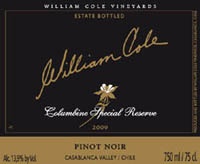 Over the last few years I’ve taken note of some impressive Pinot Noirs from Chile. It’s an understatement to say that I'm excited about that turn of events. Pinot is one of my favorite varieties when it’s great, trouble is it’s not exceptional often enough. Too often, particularly in California, it’s planted in the wrong spot or treated with a heavy hand. A dollop of Pinot Noir in another variety is fine with me, anything else blended into a varietal Pinot Noir, not so much. Today I’ll look at a Chilean Pinot Noir that hit the spot for me.
Over the last few years I’ve taken note of some impressive Pinot Noirs from Chile. It’s an understatement to say that I'm excited about that turn of events. Pinot is one of my favorite varieties when it’s great, trouble is it’s not exceptional often enough. Too often, particularly in California, it’s planted in the wrong spot or treated with a heavy hand. A dollop of Pinot Noir in another variety is fine with me, anything else blended into a varietal Pinot Noir, not so much. Today I’ll look at a Chilean Pinot Noir that hit the spot for me.
 Valdivieso 2005 Eclat
Valdivieso 2005 Eclat De Martino 2006 “Las Cruces” Single Vineyard Old Bush Vines
De Martino 2006 “Las Cruces” Single Vineyard Old Bush Vines Estampa 2008 Gold Assemblage Carmenère
Estampa 2008 Gold Assemblage Carmenère 
 Maquis 2006 Lien
Maquis 2006 Lien Hacienda Araucano 2008 Clos de Lolol
Hacienda Araucano 2008 Clos de Lolol Emiliana 2007 Coyam
Emiliana 2007 Coyam Casas del Bosque 2007 Gran Estate Selection Private Reserve
Casas del Bosque 2007 Gran Estate Selection Private Reserve The
The 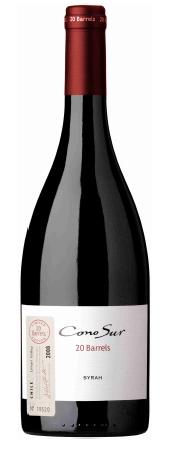 Well priced Cabernet Sauvignon is what first turned me on to Chilean wines many years ago. After discovering the great values available in that category I began to explore others as well. Over the years the other red from Chile that has most often impressed me is Syrah. There are many well priced examples coming from Chile. Stylistically they take cues from both the old and new world. Today I’ll look at a limited release Syrah from
Well priced Cabernet Sauvignon is what first turned me on to Chilean wines many years ago. After discovering the great values available in that category I began to explore others as well. Over the years the other red from Chile that has most often impressed me is Syrah. There are many well priced examples coming from Chile. Stylistically they take cues from both the old and new world. Today I’ll look at a limited release Syrah from  I recently took part in a virtual tasting and had the opportunity to sample a number of Sauvignon Blanc’s from Chile. It was an interesting concept, eight winemakers in one room in Santiago Chile, a sommelier hosting from New York City and wine writers at home, all connected via web conference and tasting the same wines. I’d had tons of Chilean Sauvignon Blanc prior to this tasting, but sampling them side by side was illuminating. It showed off not only the variety of climates and terroir but also a host of winemaking styles. Each Sauvignon Blanc we tasted was pretty distinct. What follows are my impressions of the four that stood out to me.
First up is the
I recently took part in a virtual tasting and had the opportunity to sample a number of Sauvignon Blanc’s from Chile. It was an interesting concept, eight winemakers in one room in Santiago Chile, a sommelier hosting from New York City and wine writers at home, all connected via web conference and tasting the same wines. I’d had tons of Chilean Sauvignon Blanc prior to this tasting, but sampling them side by side was illuminating. It showed off not only the variety of climates and terroir but also a host of winemaking styles. Each Sauvignon Blanc we tasted was pretty distinct. What follows are my impressions of the four that stood out to me.
First up is the 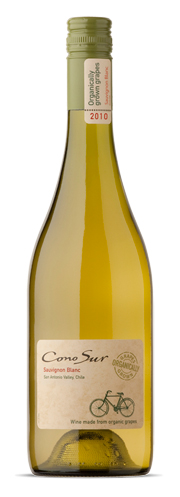 The third wine I really enjoyed was the
The third wine I really enjoyed was the  There’s something about Pinot Noir that can be downright inspirational when it’s made right. When the fruit is allowed to shine and enhanced rather than burdened by oak and its purely Pinot it can be quite magical. At least I know that’s how I feel about Pinot. While I rarely turn down the opportunity to sample one, my expectations are tempered with the knowledge that it takes a lot to impress my palate when it comes to this grape. Today I’m going to look at a brand new release from
There’s something about Pinot Noir that can be downright inspirational when it’s made right. When the fruit is allowed to shine and enhanced rather than burdened by oak and its purely Pinot it can be quite magical. At least I know that’s how I feel about Pinot. While I rarely turn down the opportunity to sample one, my expectations are tempered with the knowledge that it takes a lot to impress my palate when it comes to this grape. Today I’m going to look at a brand new release from 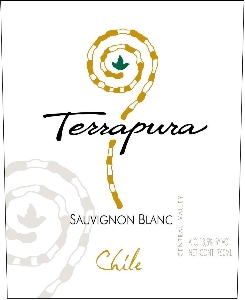 Dating back to the 1880’s the Undurraga family has played a significant role in the Chilean wine industry. As it relates to Chilean wine in the US they were the first to export here. And when Chilean wine started to find a significant home on US shelves they led the charge in brand recognition. In 2006 they sold their namesake winery, brand name and vineyard. But instead of retreating from the wine business they approached it anew. Alfonso Undurraga Mackenna great nephew of Undurraga founder Francisco started a new brand with his sons. Thus
Dating back to the 1880’s the Undurraga family has played a significant role in the Chilean wine industry. As it relates to Chilean wine in the US they were the first to export here. And when Chilean wine started to find a significant home on US shelves they led the charge in brand recognition. In 2006 they sold their namesake winery, brand name and vineyard. But instead of retreating from the wine business they approached it anew. Alfonso Undurraga Mackenna great nephew of Undurraga founder Francisco started a new brand with his sons. Thus  Koyle - 2007 Cabernet Sauvignon. This selection also has 12% Carmenere blended in. This Cabernet has a really big and expressive nose showing lots of dark, brooding berry fruit. Berry flavors continue through the palate joined by spice and earth notes which lead to a nice finish. This wine has firm tannins. If you’re drinking it now decanting is heartily recommended.
Koyle - 2007 Cabernet Sauvignon. This selection also has 12% Carmenere blended in. This Cabernet has a really big and expressive nose showing lots of dark, brooding berry fruit. Berry flavors continue through the palate joined by spice and earth notes which lead to a nice finish. This wine has firm tannins. If you’re drinking it now decanting is heartily recommended.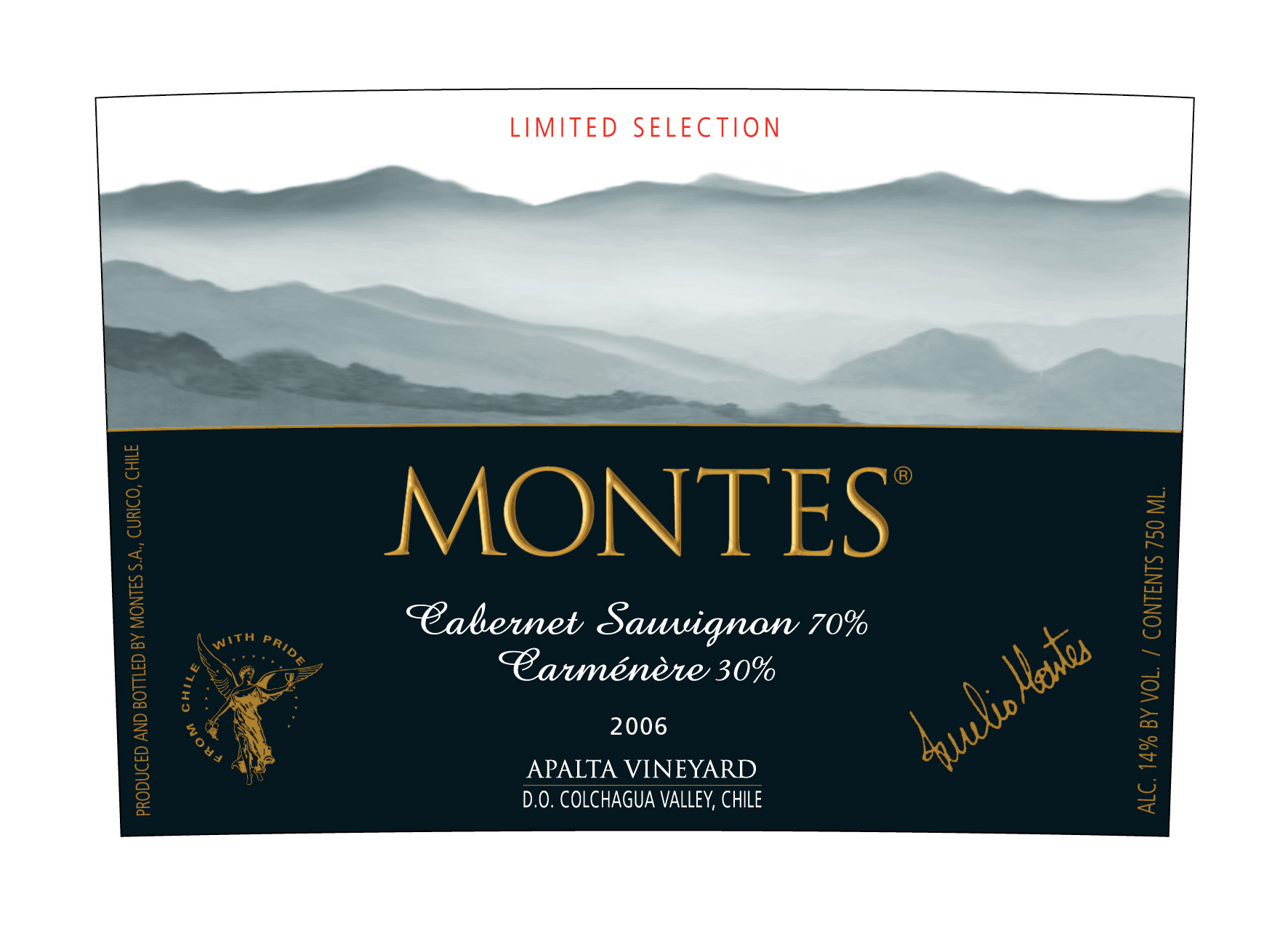 I've been drinking wines from
I've been drinking wines from